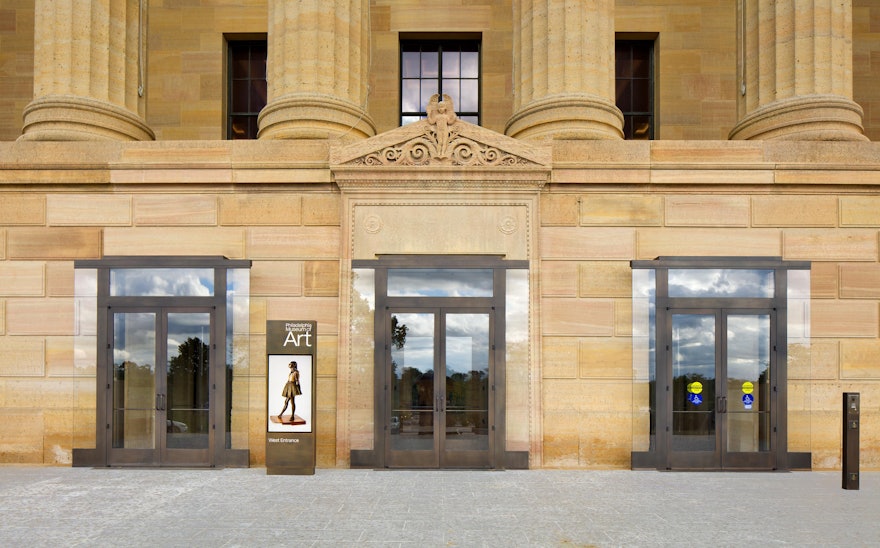Pentagram has developed a comprehensive system of signage and wayfinding for the Philadelphia Museum of Art as part of its Core Project, a major expansion and renovation by the architect Frank Gehry that reclaims existing space within the Museum to enable it to display more of its world-class collection. The refined and elegant signage seamlessly integrates with Gehry’s stunning revitalization and the beauty of the Greek Revival-style building, one of the city’s great landmarks.
Gehry’s master plan transforms the Museum interior through the renovation of spaces within the existing footprint and the creation of new underground galleries, adding a total of 90,000 square feet of space. Built behind the famous “Rocky steps,” it does not alter the existing façade, and honors the Beaux-Arts building’s original architectural language and materials.
The challenge for the Pentagram designers was to modernize the wayfinding in a way that was timeless and understated without significantly intervening with the architecture. The signage is streamlined and minimal, placed where visitors need it for navigation without calling attention to itself. The program builds on the visual identity Pentagram previously designed for the Museum in 2014, which is set in the sans serif typeface Avenir and provides a cohesive but flexible branding system for the institution.
“Gehry Partners tried to strike the right balance between continuity and change. Their work, while distinctive and contemporary in feel, also takes its cue from the architectural character of the 1928 building. Pentagram’s approach to signage and wayfinding strikes the same balance,” says Timothy Rub, the George D. Widener Director and Chief Executive Officer of the Museum.
The program encompasses a variety of signage types in modular forms that can be easily updated. Much of the system is freestanding, with as little wall signage as possible. Kiosk-like signs are positioned next to entrances and at access points in common areas and public spaces. Most of these are digital with LED screens that display rotating information; analog versions feature printed posters that can be swapped out. The vertical kiosks visually echo forms and proportions in the architecture, like the columns in the façade.
To preserve the pristine stone and clean lines of the architecture, the designers tried to avoid affixing pin-mounted lettering and framed signs to the walls. Instead, smaller wayfinding and identification signs, as well as code and restroom signs, are held from the surface by simple metal fasteners that evoke easel clips. The signs are consistently sized to match the dimensions of the original stone blocks, so they can attach into the mortar joints between them. The approach extends to larger installations like the donor wall, which is composed of a series of clipped panels.
The Museum’s principal point of entry is the newly renovated Lenfest Hall, which reopened in 2019 with digital signage including illuminated LED poster boxes and newly designed bronze-and-wood neoclassical visitor desks with large-scale screens. Lenfest Hall was previously identified with faded red lettering painted directly on the wall at the top of the room; this has been “restored” with fade-proof vinyl affixed to the surface. The same technique is used in the new Williams Forum and Vaulted Walkway.
The freestanding kiosks and clipped signs are beautifully made of Muntz metal (a mix of copper, zinc and iron) and glass. The signage was fabricated and installed by DCL. The system will continue to be expanded and implemented under the guidance of the Museum’s in-house creative director, Luis Bravo, for the second phase of the revitalization.

